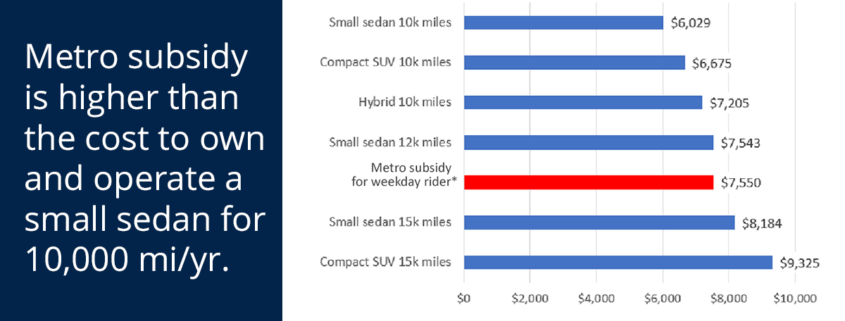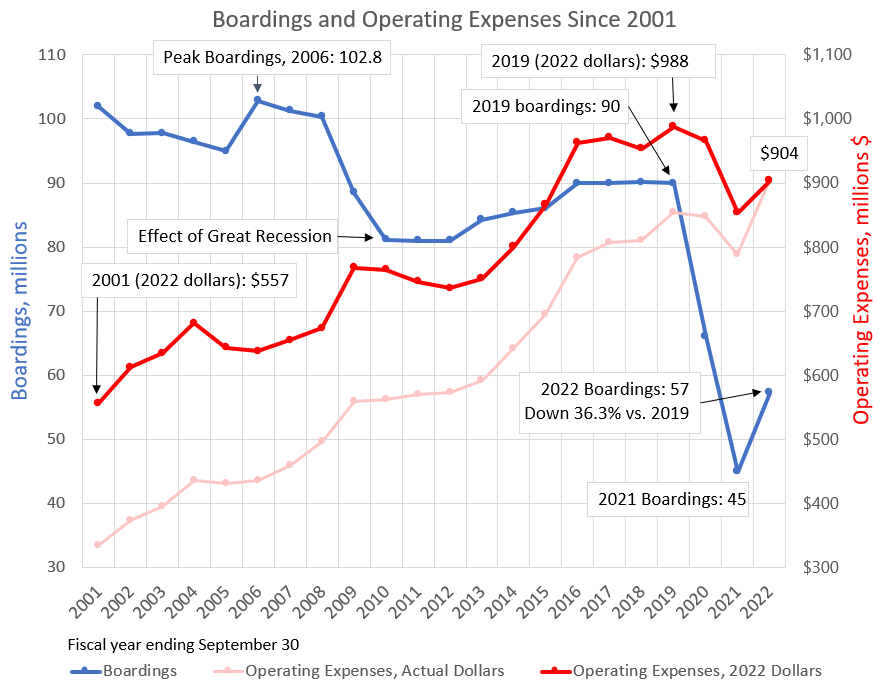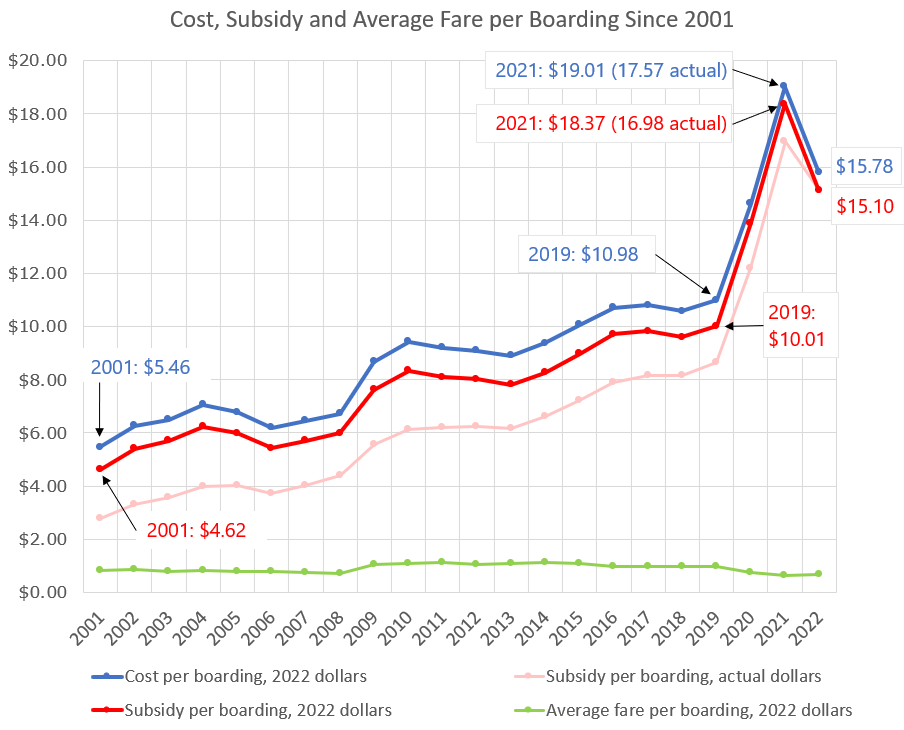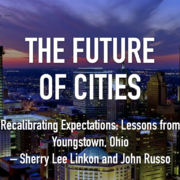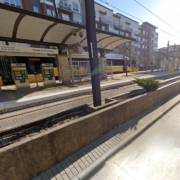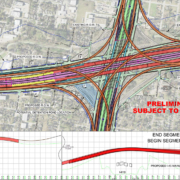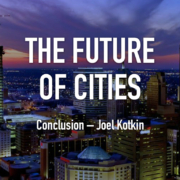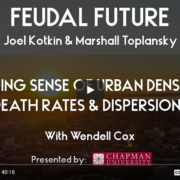METRO subsidizes riders higher than the cost of car ownership!
Metro’s 2022 annual report recently was posted online. Last year’s report (2021) was the first annual report fully affected by Covid (blog post), with ridership down 50% compared to 2019 and the rider boarding subsidy increasing from $10.01 in 2019 to $18.37 in 2021 (in 2022 dollars).
2022 is the first year in the ridership recovery, which has been slow and is likely to continue incrementally for many years. 2022 ridership was down 36.3% compared to 2019, and the improved ridership lowered the boarding subsidy to $15.10.
This first plot shows Metro’s operating budget and ridership. Ridership first exceeded 100 million in 1999 at 101 million boardings, and Metro’s all-time peak was 103 million in 2006. Ridership dropped to 81 million boardings in 2010 due to the Great Recession, and the slow recovery increased ridership to 90 million in 2019, the year before Covid. Metro’s 2022 $904 million operating expense resumed an upward trend after two years of declines, but the 2022 expense remained below inflation-adjusted values for 2016 through 2020.
The next plot shows the taxpayer subsidy per boarding, determined by dividing the operating loss ($864.6 million in 2022) by the number of boardings (57.26 million in 2022). The 2022 subsidy was $15.10 per boarding, down 18% from the 2021 inflation-adjusted value of $18.37. The more concerning feature of this plot is the steady rise in boarding subsidies before Covid, up 117% (in 2022 dollars) from $4.62 in 2001 to $10.01 in 2019.
We’ll probably see some continued improvement in the boarding subsidy, but the slow ridership recovery and increasing Metro budget means it will likely never get back to the pre-Covid value, or even within 25% of the pre-Covid value.
Metro’s approved 2023 budget has an $855 million operating budget (page 41) which is suspicious because the 2022 operating expense was $903.5 million and operating loss was $864.6 million. Cost-cutting or more efficient operation would be welcome, but I’ll believe it when I see it. Also, the 2022 operating budget was $740.5 million (page 41) but the actual expense was $903.5 million.
A Metro customer making a round trip is two boardings, so the trip subsidy is $30.20. A regular Metro customer making 250 round trips per year will have 250 x $30.20 = $7,550 total subsidy per year. Using AAA data for 2022, the subsidy is higher than the cost to own and operate a small sedan for 10,000 miles, and is about equal to the cost for driving a small sedan 12,000 miles per year. So every regular Metro customer is costing taxpayers the cost of annual car ownership.
Read the rest of this piece on Houston Strategies.
Erik (Oscar) Slotboom is the author of Dallas-Fort Worth Freeways, Texas-Sized Ambition. Learn more and view the book here. Find more information about Oscar at Houston Freeways.com.

